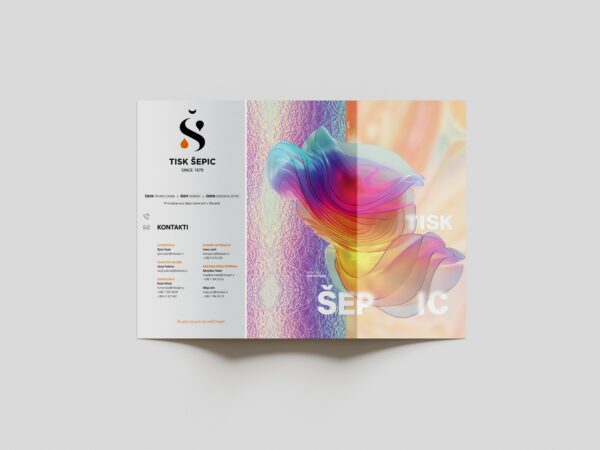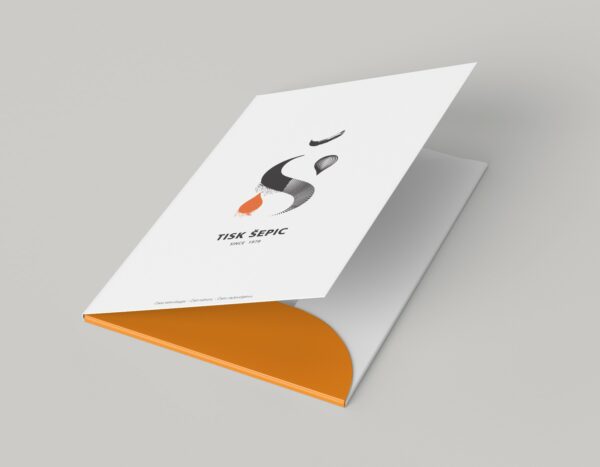In order for your printed materials to really stand out from the crowd, you can opt for various creative finishing touches to the printed materials. With creative printing, you can enhance printed materials appearance, emphasize individual elements and add a touch of elegance and prestige.
We offer various types of after-treatment:
- Thermal printing (film printing in different shades of colour)
Thermal printing is the application of coloured film onto a surface, where the desired graphic print is transferred onto paper using a printing block. When applying the film, high temperature and strong pressure on the printing surface is required. The end result is a shiny graphic element that makes the print elegant and prestigious. Thermal printing is most often used for packaging to add a touch of elegance and prestige. It can also be used on business cards, invitations, certificates of merit, greeting cards and other printed matter. Films in various colours are available for thermal printing. Gold and silver are the most commonly used colours, but you can also opt for black, blue, red, bronze and many others. Thermal printing can also be combined with blind stamping. With that technique you can feel the imagery of individual graphic elements on the printed matter with your fingers.
- Blind stamping
Blind stamping/embossing creates a 3D effect, which is achieved by pressing a printing block onto paper. This way you either get a concave or convex relief image of the logo or other individual elements that you want to emphasize on the printed matter. Blind stamping provides a physical depth on paper and can be felt with your fingers. It is an uncoloured print, so the whole process is more environmentally friendly. It is typically used for folders, business cards, packaging, gift certificates and greeting cards. Keep in mind that with double-sided printing, the other side of the blind stamp should not contain important information because it is more difficult to read. Blind stamping can be combined with thermal printing of coloured film in different shades. This method can further emphasizes the effect and adds a great finishing touch to your printed matter.
- White, gold and silver colours
A new offering in our company as well as a special feature on the market is varnish printing in gold, silver, white and metallic colours using digital technology. Varnish printing is most pronounced when it is printed on matte coated paper. The effect will be greater when only individual details on the print are varnished rather than the entire surface. Should you want to print on transparent labels or coloured paper, we recommend using white colour as a base over which other colours are then printed in the second pass. Where we want to add a touch of elegance, gold and silver colours are often used to print on individual elements. We use this technique on invitations, certificates of merit, greeting cards, gift vouchers and similar printed materials. The gold and silver colours are used to their best effect when applied to larger surfaces. When opting to print the text in gold/silver, make sure to make it thicker because the effect is less noticeable with thin lines. The same applies to all elements that we want to emphasize with metallic colours.
- Special UV effects
You can brighten up the printed matter with UV varnish, which is applied to individual sections of the printed matter. Then it dries up (is baked onto the surface) upon touching the surface and being illuminated with special UV light. This provides a glossy coating of the desired sections of the printed material, which stand out more in comparison to the rest of the surface. In order for your printed material to have a longer lifespan, we recommend lamination (matte, glossy, anti-scratch, soft-touch) before applying varnish. This will add the finishing touches to your printed material. The varnished parts of the printed material create a three-dimensional look and a lustre on the surface. It will enhance the look of your product.










